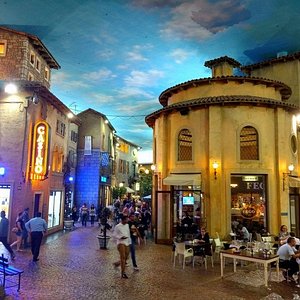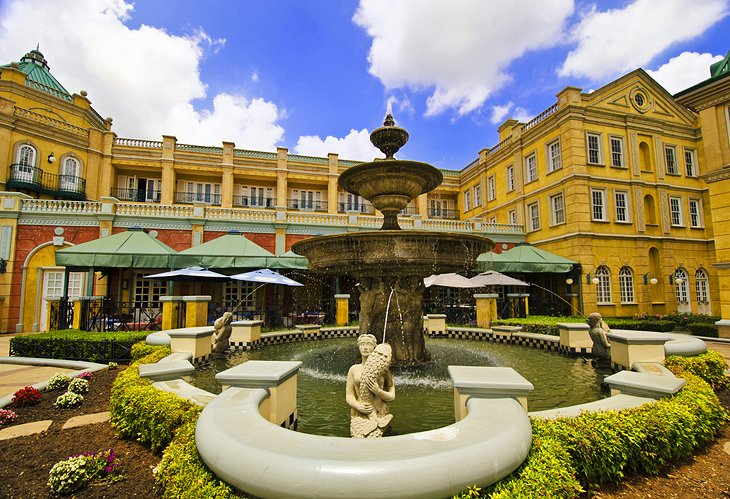Unknown Facts About Johannesburg North Attractions
Table of ContentsThe Main Principles Of Johannesburg North Attractions The Johannesburg North Attractions DiariesJohannesburg North Attractions for BeginnersLittle Known Facts About Johannesburg North Attractions.The Johannesburg North Attractions StatementsFascination About Johannesburg North AttractionsThe Basic Principles Of Johannesburg North Attractions
You must maintain security in mind and tourists should stay alert at all times when in unfamiliar surroundings. Speak with the locals when you remain in town to discover the location you are remaining in. Johannesburg North attractions. When on the street (this does not put on shopping center and other safe environments) finest basic guidance is to try your ideal to resemble a local and to stay clear of displaying any form of wide range
See This Report on Johannesburg North Attractions
Professor Revil Mason O. J. (Thomson, 1946) explored the Witwatersrand's pre-colonial history. His archaeological work exploded the 'em pty land' misconception, according to which the area was empty of human habitation before the arrival of European inhabitants. In his magazines Prehistory of the Transvaal: A Document of Human Task (1962) and Origins of Black Individuals of Johannesburg and the Southern Western Central Transvaal AD 3501880 (1986 ), Teacher Mason demonstrated the degree of social and financial advancement in the location prior to Europeans established foot here.

The Main Principles Of Johannesburg North Attractions
In 1878, David Wardrop located gold in quartz blood vessels at Zwartkop, north of Krugersdorp. In 1881, Stephanus Minnaar came across gold on the ranch Kromdraai, near the Cradle of Humankind.
In March 1886, a protrusion (quickly to be called the Key Reef) was discovered, quite fortunately, on Gerhardus Oosthuizen's ranch Langlaagte. Some say that the Lancastrian coal miner George Pedestrian discovered this reef. Another itinerant English prospector, George Harrison (who had actually formerly operated in Australian mines) obtained a prospecting licence in regard of Langlaagte in May 1886.
He made a decision to go on in a mission for greener fields, and disposed of his Langlaagte insurance claim for the baronial sum of 10. Alas: beneath lay the richest goldfield ever located. The exploration of this rich auriferous reef prompted a gold thrill that signified the end of agrarian tranquillity in the southerly Transvaal.
It would, within six years, become the biggest community in southern Africa. Within a decade, it would make the Z. A. R. until after that an anarchical and insolvent little state the most affluent nation in Africa. By the millenium, the Z. A. R. was to go beyond Russia, Australia and the USA of America to end up being the world's leading gold manufacturer, creating more than a quarter of the world's gold.
Johannesburg North Attractions for Beginners
It was called Ferreira's Camp, called after Colonel Ignatius Ferreira. He was a Boer traveler upon whom the British authorities had actually presented the standing of Companion of the Most Identified Order of St Michael and St George (entitling him to the post-nominal letters C. M. G.) in gratitude for his duty in the battle that had actually deposed the Pedi king Sekhukhune in 1879.
Soon the camp was including tents and wagons as novices got here daily from far and wide. By September 1886, some 400 people lived in Ferreira's Camp, which quickly flaunted upraised iron and lumber structures. Two various other camps were established: Meyer's Camp on the ranch Doornfontein, and Paarl Camp. The latter was nicknamed Afrikander Camp; many people from the Cape Swarm resolved there.

Getting The Johannesburg North Attractions To Work
This name obtained money by word of mouth, such that the State Assistant verified the name to the Mining Commissioner on 9 October 1886. Stands in the town were auctioned on 8 December 1886. While some stands were marketed for 10, others were knocked down for as little as sixpence.
Two years later on, these erven were to transform hands for as high as 750 each. The tented camps decreased as a dorp of corrugated iron buildings established and broadened north of the mines situated along the Main Reef Roadway. Locations such as Jeppe's Community (where working-class immigrants erected their dwellings) and Doornfontein (where the wealthy brand-new 'Randlords' started to see here construct their opulent houses) were quickly included in the ever-expanding map of the town.
A Biased View of Johannesburg North Attractions
Apart from the street names, there were no indications of Johannesburg being located in a Dutch-speaking country., virtually every person spoke English and also the Federal government slaves addressed one in English, unless they were initial dealt with in the Taal (or Low Dutch)'.
Britain had a rate of interest in making sure ideal problems for gold manufacturing on the Witwatersrand, and that the gold was exported to London rather than Berlin an important made all the extra clamant by the Z. A. R.'s boosting toenadering with Germany. Mine owners were on an accident training course with President Kruger, whose plan of monopolistic concessions (commonly provided to his cronies) stopped mining business from procuring supplies of materials (particularly dynamite) and labour by themselves, less costly terms
Some Known Questions About Johannesburg North Attractions.
In 1890, the Volksraad had actually limited the franchise to white men that had resided in the Z. A. R. for fourteen years or longer, hence invalidating most of the immigrants (that occurred to be the significant factors to the fiscus). However, anxiety for the vote was a mere pretext for promoting a various agenda; a lot of uitlanders concerned themselves as Learn More short-lived site visitors and had no purpose of staying in the Z.